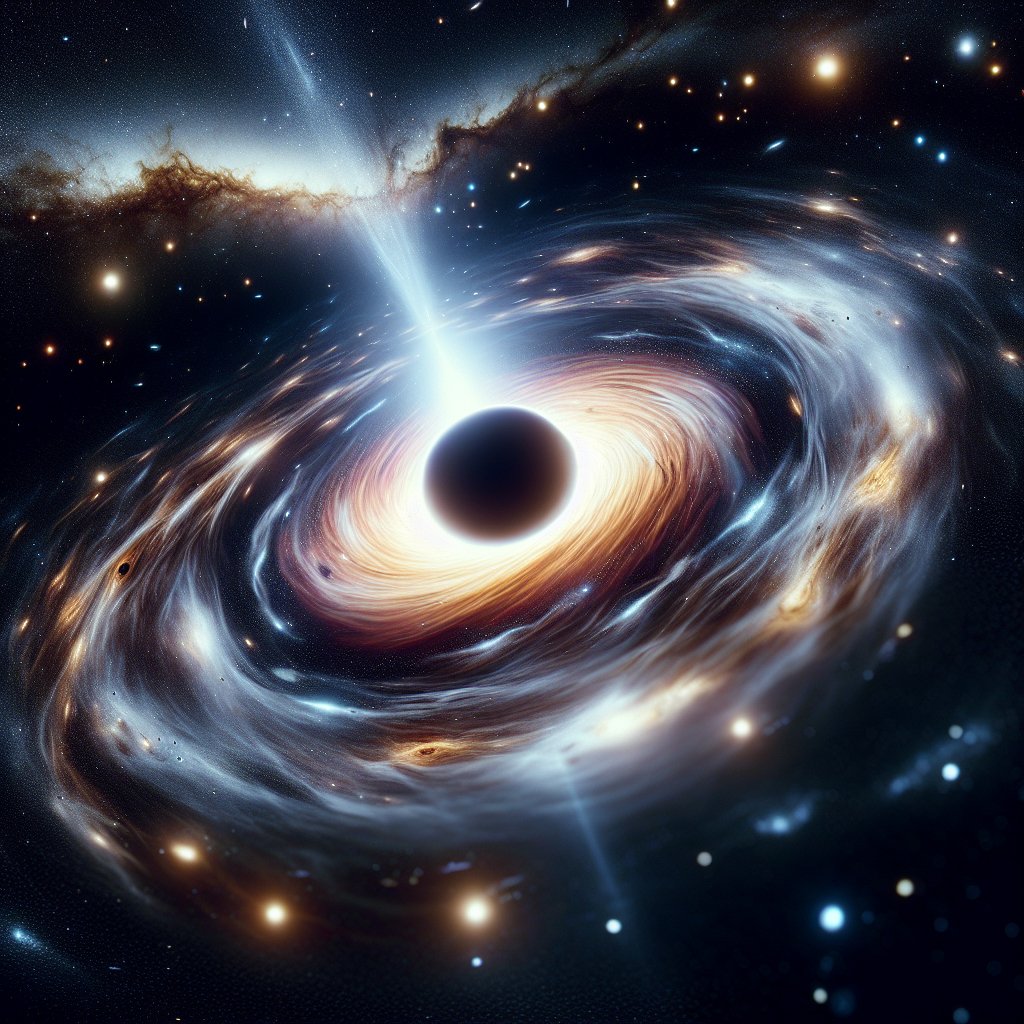Supermassive black holes, enigmatic and powerful, reside at the centers of most galaxies, including our own Milky Way. These cosmic giants, with masses ranging from millions to billions of times that of our Sun, continue to intrigue and baffle astronomers and physicists alike. Their immense gravitational pull and mysterious nature make them a focal point of study in the quest to understand the universe.
The Formation and Growth of Supermassive Black Holes
The origins of supermassive black holes remain one of the most compelling mysteries in astrophysics. Several theories attempt to explain how these colossal entities form and grow. One prevailing hypothesis suggests that they originate from the collapse of massive stars in the early universe. These stellar remnants, known as seed black holes, could have merged and accreted matter over billions of years, eventually growing into the supermassive black holes we observe today.
Another theory posits that supermassive black holes could have formed directly from the collapse of massive gas clouds in the early universe. This direct collapse model bypasses the intermediate stage of star formation, allowing for the rapid growth of black holes in the dense environments of young galaxies. Observations of quasars, which are powered by accreting supermassive black holes, provide evidence that these objects existed when the universe was less than a billion years old, supporting the idea of rapid formation.
Accretion of matter is a critical process in the growth of supermassive black holes. As gas and dust fall into the gravitational well of a black hole, they form an accretion disk, heating up and emitting intense radiation. This process not only contributes to the growth of the black hole but also influences the surrounding galaxy, regulating star formation and shaping the galactic environment. The interplay between a supermassive black hole and its host galaxy is a key area of research, as it sheds light on the co-evolution of galaxies and their central black holes.
The Role of Supermassive Black Holes in Galaxy Evolution
Supermassive black holes are not merely passive entities at the centers of galaxies; they play an active role in the evolution of their host galaxies. The energy and momentum released by accreting black holes can drive powerful outflows and jets, impacting the interstellar medium and regulating star formation. This feedback mechanism is thought to be crucial in shaping the properties of galaxies, influencing their size, structure, and star formation rates.
Observations of active galactic nuclei (AGN), which are powered by accreting supermassive black holes, reveal the profound impact these objects can have on their host galaxies. AGN can outshine their entire host galaxies, emitting radiation across the electromagnetic spectrum. The energy released by AGN can heat and expel gas from the galaxy, quenching star formation and altering the galaxy’s evolution. This feedback process is believed to be responsible for the observed correlation between the mass of a galaxy’s central black hole and the properties of its bulge, known as the M-sigma relation.
In addition to feedback processes, supermassive black holes may also play a role in the formation of large-scale structures in the universe. The gravitational influence of these massive objects can affect the dynamics of galaxy clusters and the distribution of dark matter. Understanding the role of supermassive black holes in cosmic structure formation is an ongoing area of research, with implications for our understanding of the universe’s evolution.
Observational Challenges and Future Prospects
Studying supermassive black holes presents significant observational challenges. These objects are often shrouded in dense clouds of gas and dust, making direct observations difficult. However, advances in observational techniques and technology have allowed astronomers to probe these enigmatic objects with increasing precision. Instruments such as the Event Horizon Telescope (EHT) have provided unprecedented views of the immediate environment around supermassive black holes, capturing the first-ever image of a black hole’s event horizon in the galaxy M87.
Future missions and observatories promise to further unravel the mysteries of supermassive black holes. The James Webb Space Telescope (JWST), with its powerful infrared capabilities, will enable astronomers to peer through dust-obscured regions and study the early stages of black hole formation and growth. Additionally, upcoming gravitational wave observatories, such as the Laser Interferometer Space Antenna (LISA), will open a new window into the universe, allowing for the detection of merging supermassive black holes and providing insights into their population and evolution.
As our understanding of supermassive black holes continues to evolve, these cosmic giants remain a testament to the complexity and wonder of the universe. Their study not only deepens our knowledge of black holes themselves but also enhances our understanding of galaxy formation, evolution, and the fundamental processes that govern the cosmos.










